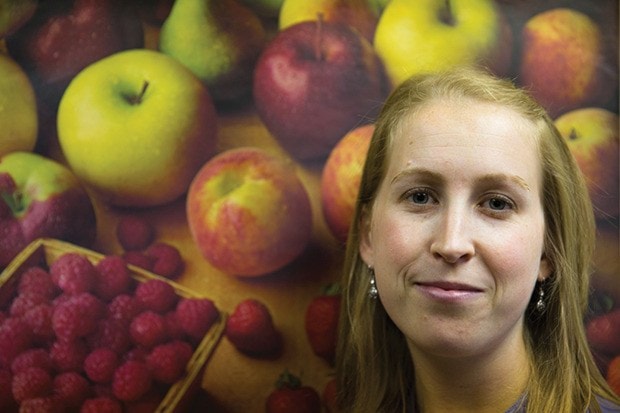Getting kids to make healthy choices can be challenging, especially during the school year when kids may eat around the healthiest part of their brown bag lunches.
So how can you keep your kid from leaving the apple you packed on the teacher’s desk? It all starts at home, says Justine Wardle, a community nutritionist with the Saanich Health Unit.
“Parents encounter a variety of challenges – sometimes with younger children, there are issues around introducing new foods and difficulty getting them to try new foods,” said Wardle.
“In a school environment, I’d say it’s challenges around packing lunches, packing healthy foods that parents know their kids will eat.”
As a community nutritionist, Wardle works primarily with women, children and families on a range of health issues, including proper diet for kids and promoting healthy eating. While many schools run their own healthy food programs, parents still rely on the help of nutritionists to ensure they pack a balanced meal for their kids.
Wardle said getting kids to eat healthy foods can be a process, but it’s important not to force kids to eat foods if they don’t want to. In her experience, she said doing so has an adverse effect on developing healthy habits.
“When parents pressure their child, they tend to be resistive, whereas when food’s offered in a neutral environment, children more naturally want to try it,” she said, noting repetition is often the key to healthy eating.
“If parents offer healthy choices in the home and regular meals at set times, and they sit down with their child and role model, kids will decide if they want to eat the healthy option. Sometimes it will take 20 to 30 times of exposure to a new food before a child will eat it, but with repeated exposure, the child will eventually want to try it.”
Wardle recommends offering familiar dishes along with one new food at a time, so as not to overwhelm children with unfamiliar foods. She also said getting kids involved in preparing their lunches is beneficial to opening them up to new foods.
“Any time you involve your child in preparing foods at home or grocery shopping, you’re more likely to get their interest,” she said. “When kids help prepare their lunches, they’re more likely to eat them.”
As some ground rules, Wardle said to make sure at least three of the four food groups are covered in your child’s lunch, keep warm or cold foods in an insulated lunchbox and substitute sugary drinks with healthier beverages.
But ultimately, Wardle said the biggest factor in getting kids to eat healthy is seeing what their parents eat.
“It goes back to being a good role model for healthy eating. Parents who sit down with their children and enjoy even just one meal a day, that can set a really good example,” she said.
For more information about eating healthy, see Canada’s Food Guide at hc-sc.gc.ca/fn-an/food-guide-aliment/index-eng.php.
